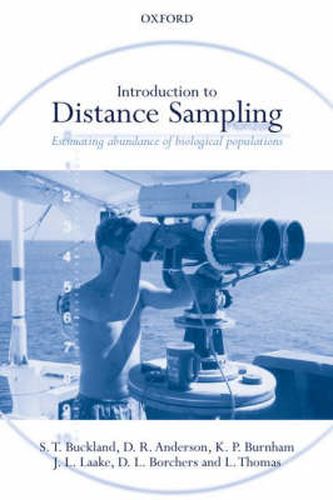Readings Newsletter
Become a Readings Member to make your shopping experience even easier.
Sign in or sign up for free!
You’re not far away from qualifying for FREE standard shipping within Australia
You’ve qualified for FREE standard shipping within Australia
The cart is loading…






This book introduces the suite of techniques known as ‘distance sampling’, so-called because the common theme is the sampling of distances of objects from a line or point. The objects are usually animals or groups of animals (‘clusters’), and the primary aim is to estimate their density or abundance in a survey area. In line transect sampling, the sampled distances are the shortest or perpendicular distance from a detected object to the line. It is the most widely used method for assessing the abundance of a wide range of terrestrial and marine animals. In point transect sampling, distances of detected objects from the sampled points are recorded. This book provides a comprehensive introduction to both techniques, and also describes several related techniques. ‘Introduction to Distance Sampling’ updates the 1993 book ‘Distance Sampling’, which was the first, and until now, only book devoted to the topic. The book is aimed at quantitative biologists and wildlife managers, and statisticians involved in wildlife monitoring programmes. Of particular significance in this update is the chapter on study design and field methods, which has been extensively rewritten and extended. New technologies such as laser range finders, theodolites and the Geographical Positioning System (GPS) are discussed, and advice is given on a wide range of survey methods. Analysis methods have also been generalized, through the use of various types of multiplier. Many exercises have been introduced, to make the book more useful to graduate students in wildlife and conservation management.
$9.00 standard shipping within Australia
FREE standard shipping within Australia for orders over $100.00
Express & International shipping calculated at checkout
This book introduces the suite of techniques known as ‘distance sampling’, so-called because the common theme is the sampling of distances of objects from a line or point. The objects are usually animals or groups of animals (‘clusters’), and the primary aim is to estimate their density or abundance in a survey area. In line transect sampling, the sampled distances are the shortest or perpendicular distance from a detected object to the line. It is the most widely used method for assessing the abundance of a wide range of terrestrial and marine animals. In point transect sampling, distances of detected objects from the sampled points are recorded. This book provides a comprehensive introduction to both techniques, and also describes several related techniques. ‘Introduction to Distance Sampling’ updates the 1993 book ‘Distance Sampling’, which was the first, and until now, only book devoted to the topic. The book is aimed at quantitative biologists and wildlife managers, and statisticians involved in wildlife monitoring programmes. Of particular significance in this update is the chapter on study design and field methods, which has been extensively rewritten and extended. New technologies such as laser range finders, theodolites and the Geographical Positioning System (GPS) are discussed, and advice is given on a wide range of survey methods. Analysis methods have also been generalized, through the use of various types of multiplier. Many exercises have been introduced, to make the book more useful to graduate students in wildlife and conservation management.